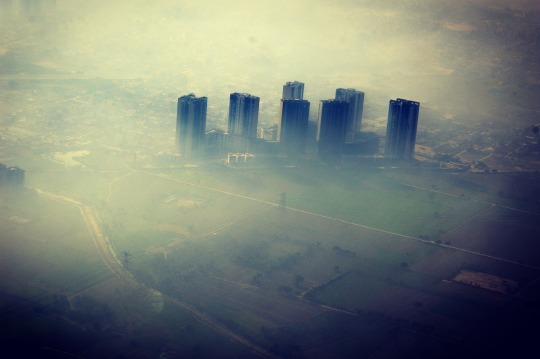#Pollutionlevels
Explore tagged Tumblr posts
Link
#Airfilters#airpollution#Childhealth#Children'slungs#Cleanerairinitiative#Cleanertransportinitiatives#Deprivedareas#Healthimpactofpollution#Indoorairquality#LondonAssembly#Londonschools#Nitrogendioxideconcentrations#Particulatematterpollution#PM2.5filters#Pollutionlevels#SadiqKhan#Schoolairquality#SchoolStreets#TransportforLondon#ULEZ#UltraLowEmissionZone
0 notes
Text
Increase in Pollution Levels in Delhi Due To Firecrackers

दीपावली के बाद पटाखों से दिल्ली में प्रदूषण का स्तर बढ़ा

रविवार की देर रात तक पटाखे फोड़ने से दिल्ली में प्रदूषण का स्तर काफी बढ़ गया है। दिवाली की रात पटाखों पर प्रतिबंध के बावजूद, निवासियों ने नियमों को तोड़ा, जिसके परिणामस्वरूप सोमवार सुबह धुंध भरा धुआँ और हवा की गुणवत्ता में गिरावट आई।

Pollution Levels in Delhi
दिवाली के दिन, शहर ने शुरू में आठ वर्षों में अपनी सर्वश्रेष्ठ हवा की गुणवत्ता देखी थी, 24 घंटे का औसत वायु गुणवत्ता सूचकांक (AQI) शाम 4 बजे 218 था। हालांकि, पटाखों के लगातार फटने से प्रदूषण के स्तर में तेज वृद्धि हुई। सुबह 7 बजे तक, AQI 275 तक पहुंच गया था, "खराब श्रेणी" में गिर गया। शादीपुर, अयानगर, लोधी रोड, पूसा और जहांगीरपुरी सहित कुछ क्षेत्रों में AQI 308 से 355 तक होने से "बहुत खराब" श्रेणी में प्रवेश किया गया। PM2.5 के रूप में ज्ञात ठीक पार्टिकुलेट मैटर, जो श्वसन प्रणाली में गहराई से प्रवेश कर सकता है और स्वास्थ्य समस्याओं को ट्रिगर कर सकता है, इन क्षेत्रों में सुरक्षित सीमा 60 माइक्रोग्राम प्रति घन मीटर से छह से सात गुना अधिक हो गई। देर रात पटाखे फोड़ने के कारण ओखला और जहांगीरपुरी सहित विभिन्न स्थानों पर PM2.5 की सांद्रता सुबह के शुरुआती घंटों में 1,000 माइक्रोग्राम प्रति घन मीटर से अधिक हो गई।

केंद्रीय प्रदूषण नियंत्रण बोर्ड के आंकड़ों के अनुसार, तुलनात्मक रूप से, दिल्ली में AQI पिछले वर्ष दिवाली पर 312, 2021 में 382, 2020 में 414, 2019 में 337, 2018 में 281, 2017 में 319 और 2016 में 431 दर्ज किया गया था। दिवाली के एक दिन बाद AQI 2015 में 360 से 2021 में 462 और 2022 में 303 तक रहा है। AQI श्रेणियां "अच्छी" (0-50) से "गंभीर प्लस" (450 से ऊपर) तक होती हैं। दिल्ली के निवासियों ने सप्ताह के अंत में साफ आसमान और भरपूर धूप का आनंद लिया क्योंकि दिवाली के ठीक पहले हवा की गुणवत्ता में काफी सुधार हुआ था। इस सुधार का श्रेय शुक्रवार को हुई रुक-रुक कर बारिश और प्रदूषक फैलाव के लिए अनुकूल हवा की स्थिति को दिया जाता है। 28 अक्टूबर से शुरू होकर, शहर ने दो सप्ताह तक बहुत खराब से गंभीर हवा की गुणवत्ता का अनुभव किया था, इस अवधि के दौरान राष्ट्रीय राजधानी के ऊपर एक धुंधला धुंध छा गया था। पिछले तीन वर्षों से, दिल्ली ने दिवाली के दौरान शहर के भीतर पटाखों के निर्माण, भंडारण, बिक्री और उपयोग पर व्यापक प्रतिबंध लगाया है। पिछले साल, पराली जलाने में कमी, देर से बारिश, अनुकूल मौसम की स्थिति और एक प्रारंभिक दिवाली ने शहर को त्योहार के बाद गंभीर वायु प्रदूषण का अनुभव करने से रोका। एक संख्यात्मक मॉडल-आधारित ढांचा, निर्णय समर्थन प्रणाली, ने अनुमान लगाया कि पड़ोसी राज्यों, विशेष रूप से पंजाब और हरियाणा में पराली जलाने से रविवार को दिल्ली में PM2.5 प्रदूषण. Read Gold Price Rate Today Read the full article
0 notes
Photo

The #Delhi_NCR air that we breather today is full of toxic and hazardous pollutants. The #pollution has risen above the danger level.
Here are a few tips that may assist in protecting yourself, friends and families from the #AirPollution.
1 note
·
View note
Text
Sea level rise will threaten UK coastal towns
A number of Somerset towns could be left underwater by 2090 if pollutionlevels remain unchecked, according to a study. Climate Central’s map of thecounty shows how the current coastline will change within a lifetime towash away settlements near the sea. Levels are predicted to rise by onemetre over the next 69 years, flooding Weston-super-Mare, Clevedon andAvonmouth. However, it is not only…
View On WordPress
0 notes
Text
People's Mint, Environment 🇮🇳 Delhi wakes up to a lingering smog covering its sky with the overall Air Quality Index (AQI) under the 'Very Poor' category, at 326
(Visuals from near Akshardham Temple & Anand Vihar)
Join Telegram:
http://t.me/peoplesmint
http://t.me/PeoplesMintIndia
www.peoplesmint.in
#news #india #delhi #Environment #POLLUTIONLEVEL #pollution #politicalnews #PeoplesMint #PeoplesMintIndia #earth #Kejariwal




0 notes
Photo

Pollution in Beijing | https://wp.me/p8GimC-2CQ #PollutionInBeijing #PollutionInChina #AboutChina #PollutionLevel #ChinaPollutionLevel #PollutionFactors #AboutBeijing #PollutionProblem #tipshire
0 notes
Text
Graphs for Gapminder Dataset
PROGRAM
LIBNAME mydata "/courses/d1406ae5ba27fe300 " access=readonly;
/*Loading Gapminder Dataset*/ DATA new; SET mydata.gapminder;
/*Labeling Variables*/ Label relectricperperson="Electricity Per Person(KWH/Person/YEAR)" oilperperson="Oil Per Person(Tonnes/Person/year)" urbanrate="Urban Rate(% of total)" lifeexpectancy="Life Expectancy(Years)" co2emissions="Co2 Emissions(metric Tonnes)";
/*Data management*/
/*coding out missing data and coding in valid data*/ If relectricperperson=0 then relectricperperson=.; IF lifeexpectancy=. then lifeexpectancy=50; IF urbanrate=. then urbanrate=50;
/*Grouping variables*/ IF lifeexpectancy LT 50 Then HealthStandard="LOW"; ELSE IF lifeexpectancy LT 75 and lifeexpectancy GE 50 THEN HealthStandard="MEDIUM"; ELSE IF lifeexpectancy GE 75 THEN HealthStandard="HIGH";
/*Data management*/ IF urbanrate GE 0 and urbanrate LT 25 then UrbanizationLevel=4; ELSE IF urbanrate GE 25 and urbanrate LT 50 then UrbanizationLevel=3; ELSE IF urbanrate GE 50 and urbanrate LT 75 then UrbanizationLevel=2; ELSE IF urbanrate GE 75 then UrbanizationLevel=1;
IF co2emissions LT 2500000000 then PollutionLevel="LOW"; ELSE IF co2emissions GE 2500000000 and co2emissions LT 5000000000 then PollutionLevel="MEDIUM"; ELSE IF co2emissions GE 5000000000 then PollutionLevel="HIGH";
run;
/*Frequency table for three Grouping variables*/ PROC freq; TABLE HealthStandard UrbanizationLevel PollutionLevel; run;
/*Procedure to obtain brief summary of variables in dataset*/ Proc MEANS; run;
/*Univariate Graph*/ PROC GCHART; VBAR HealthStandard/DISCRETE TYPE=PCT WIDTH=30; run;
PROC GCHART; VBAR UrbanizationLevel/DISCRETE TYPE=PCT WIDTH=30; run;
PROC GCHART; VBAR PollutionLevel/DISCRETE TYPE=PCT WIDTH=30; run;
/*bivariate Graph*/
PROC GCHART; VBAR HealthStandard/DISCRETE TYPE=MEAN SUMVAR=UrbanizationLevel; run;
PROC GPLOT;PLOT relectricperperson*urbanrate; run;
PROC GPLOT;PLOT co2emissions*oilperperson; run;
PROC GPLOT;PLOT co2emissions*relectricperperson; run;
PROC GPLOT;PLOT co2emissions*urbanrate; run;
PROC GPLOT;PLOT co2emissions*lifeexpectancy; run;
OBSERVATIONS
UNIVARIATE GRAPHS
Health standard percentage graph

As observed, plot is unimodel, with more than 60% of countries have life expectancy 50-75, and graph is left skewed, reflecting that very few countries have life expectancy less than 50 years.
2. urbanization level percentage graph

The graph shows unimodel percentage distribution, with level two indicating urban rate of 25-50, having maximum percentage and skewed to right, which implies only few countries have urbanrate greater that 75.
3.Pollution Level percentage graph

The graph shows countries with low Co2 emission levels occupy maximum percentage and the percent drastically decreases as Co2 levels increase.
BIVARIATE GRAPH
1. Health standard VS Urbanization Levels

The graph for two categorical variables health standard and urbanization levels shows that as urban rate increases, health standard Decreases.
This directly shows people from developed countries have low life expectancy.
2. Urban Rate vs Electricity per capita

The graph clearly shows as urban rate increases, electricity per person also increases.
3. CO2 Emission vs Oil per person graph

Graph between two continuous variable shows oil consumption and CO2 emissions dont have any connection.
4. CO2 Emission vs electricity per capita graph

As Electricity per capita increases CO2 emissions increases, since electricity is produced with mostly non renewable energy sources like coal,oil.
5.CO2 Emission vs Urban Rate

As urban rate increases, co2 emissions increases too, since urbanization and living standards are achieved at the cost of energy sources.
6. CO2 Emission vs Life Expectancy

The graph clearly shows that as life expectancy increases, CO2 emissions also increases, since for some countries have better health standard are developed countries with high energy utilization.
SUMMARY
One of the graph clearly shows that electricity usage is greater in more urbanized countries.
Also,CO2 emissions increases as both urban rate and life expectancy increases from last two graphs.
So we can conclude as people life standards increases, we tend to use more resources and which leads to high CO2 emissions.
0 notes
Photo

Delhi : increase in pollution levels after Diwali Despite the Supreme Court's ban on the sale of firecrackers, pollution levels in several regions of Delhi were higher than normal on Friday. In some places, pollutionlevels this morning were 24 times as high as the average.
0 notes